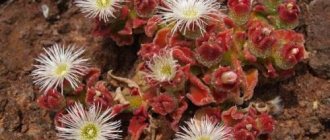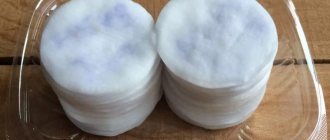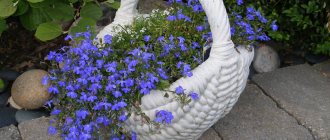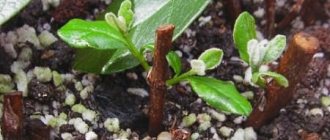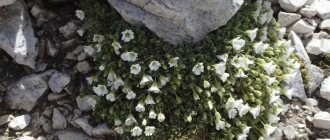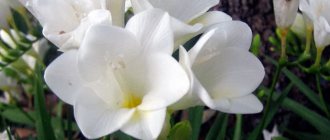Growing barberry from seeds is a troublesome, but enjoyable task. Many gardeners are happy to collect seed material, carry out stratification before sowing and then proudly watch the fruits of their labor. In this article we will talk about how to grow a crop from seeds: collect and prepare material for sowing, how to choose a suitable variety for planting on your site, care for barberry grown at home, as well as shrubs for planting in your garden plot.
Is it possible to grow barberry from seeds?
The seed method of growing barberry is practiced much less frequently compared to the method of cuttings and dividing the bush. This is due to the low germination rate of the seed and a large amount of preparatory work. And yet, if you correctly collect, prepare and sow the seeds, in 3-4 years a barberry bush will show off on your site.
Where can you use barberry berries?
The sour berries of the unpretentious shrub are used in:
- cooking;
- cosmetology;
- medicine.
Dishes using this plant are varied: sauces, jams, marshmallows, sweets, honey, juice, liqueurs and fruit drinks. Barberry sauce for meat is highly valued in many cuisines around the world. Classic pilaf also includes the use of dried barberry in its recipe.
In medicine, berries are used to strengthen the heart and blood vessels, as a choleretic agent, to improve appetite and to stop bleeding. Berries also normalize liver function and hormonal levels. For medicinal purposes, barberry is most often brewed and tea is drunk from it. Dry berries are used for this.
In cosmetology, nourishing face masks are made from milk, rolled oats and barberry. You need to keep this mask for about 20 minutes.
The low calorie content of the fruits of the shrub determines their use in nutrition for weight loss.
Choosing a seed variety when purchasing
When choosing barberry seeds, take into account the local climate. Winter-hardy varieties are suitable for the northern regions: Green Carpet, Koronita, Superba, Pillar, Maria, Auricoma . In other regions, any variety of crop can be grown.
The most interesting are the Ottawa and Thunberg barberries. Ornamental shrubs reach 2.5 m in height, have a spreading crown and thorny branches. The color of the leaves varies depending on the variety: green, golden bronze, yellow, orange, red, burgundy, soft pink, coral.
To get a good harvest, it is recommended to plant seedless barberry. Its fruits are suitable for fresh consumption and making jam.
Columnar varieties are suitable for creating hedges. Vertical bushes do not require frequent pruning: Thunberga Pouvou, Electa, Rosie Rocket.
Spherical varieties are suitable for planting in rock gardens and creating hedges: Thunberga Admiration, Bananza Gold.
Miniature varieties are intended for growing at home: Bagatelle, Atropurpurea Nana, Kobold.
Reference. Despite their unpretentiousness, the bushes do not grow well in the shade, preferring sunny areas, or at least partial shade.
Description and varieties of crops
The barberry bush is an evergreen plant in the south or deciduous in the middle zone, Siberia and the Urals, a prickly plant reaching 3 meters in height. The flowers are small, bright pink or yellow; at the end of May the branches are completely covered with them. During the flowering period, the plant looks decorative.
After the bush blooms, it bears narrow, oblong berries. When ripe they turn red. Harvesting for drying and storage is carried out in late August - early September. If the fruits are used for food, it is better to do this after the first frost - the berries will gain sweetness.
The plant bears fruit from the 3rd year of life. This requires 1 or more barberries nearby - the shrub has cross-pollination.
The following varieties of barberry are distinguished:
- Ordinary. It grows up to 3 m, the branches are erect, covered with multiple thorns. The berries are edible. The shrub is frost-resistant, unpretentious.
- "Thunberg." The most popular and numerous varieties bred. Growth up to 1.5 m. The crown changes color from green in summer to purple, lilac, and gold in autumn. The stem is colored red. The berries are bright, but unsuitable for eating. Easy to care for, it can be planted in the middle zone, in the Urals, including in megacities.
- Amursky. It grows up to 3 m, the crown is spreading, with large leaves, the berries are edible and store well. The shrub can withstand drought, frost, and direct sunlight.
- Ottawa. Homeland - Canada, similar to Thunberg barberry, but with larger leaves. Differs in the smallest number of spines. Acclimatized for cultivation in Russia.
- Canadian. Similar to the common one, but lower - grows up to 2.5 m.
- Red-leaved. Leaves are purple in summer and fall. Red decorative barberry must grow in the sun, otherwise it will turn green. Otherwise, the principles of planting and care do not differ from other types.
View this post on Instagram
Posted by GARDEN STREET GARDEN CENTER (@gardenstreetnn) Sep 6, 2022 at 9:44 am PDT
When to plant barberry seeds
Barberry seeds.
Barberry seeds can be planted in spring and autumn. Spring sowing is carried out if there is no possibility for autumn work. The seeds are first stratified in the refrigerator. Sowing work is carried out in April, as soon as the soil warms up well.
With any sowing method, the seedlings will be dense, so they need to be thinned out. 40-50 cm are left between seedlings, and after 2 years they are planted in a permanent place.
Features of planting before winter
The following varieties of barberry are best suited for sowing in late autumn: Amur, Canadian, Korean, common, Siberian.
In early October, prepare the beds and sow fresh seeds thickly. More than 50% will not sprout. Winter planting has a great advantage: the seed material does not need to be stratified, winter will do everything for you, and in the spring seedlings will appear on the site.
Pest and disease control of barberry
Barberry is characterized by strong immunity, but during the process of growth and development it can be attacked by various pests and diseases. Fungal organisms lead to the loss of its decorative properties and can even cause the death of young plants.
In most cases, the shrub is affected by powdery mildew. Its symptoms appear in the middle of the summer season, when a powdery coating appears on both sides of the foliage. As it multiplies, it becomes hard and covers the entire leaf. In the absence of effective treatment measures, the mycelium will spread to healthy parts of the crop.
To combat powdery mildew, gardeners use proven traditional methods. At the beginning of spring, before the buds swell, they treat the bush with boiling water, evenly distributing the liquid.
A solution of soda and soap also fights fungal infections well. To create it take:
- 10 liters of water.
- 0.5% soda ash.
- 40 g of soap.
Treatment is carried out 3 times a season.
Effective insecticides can be used to eliminate powdery mildew. Among them is Bordeaux mixture.
As rust progresses, orange spots appear on the outside of barberry leaves. The bottom of the foliage is covered with fungal spores. To prevent the loss of decorativeness or the death of the culture, it is necessary to begin radical treatment as early as possible.
Among the most effective methods of combating the problem are tearing off and destroying diseased leaves, treating with fungicides and a solution of Bordeaux mixture. Spraying should be started in sunny weather so that the product is not washed off by rain.
Barberry is also subject to various types of spotting. As the disease develops, the leaves become covered with rusty or brown spots that resemble burns. Sometimes they look like a whitish coating. If the bush is completely affected, it begins to dry out. At the same time, it is difficult for gardeners to determine the original cause of such symptoms.
To restore barberry planted in the garden, you will need to use fungicides. Such compositions effectively fight the disease and contribute to the rapid restoration of the bush.
When planning to plant barberry in the fall or spring, it is necessary to protect it from common pests. The sweet juice from its shoots is considered the main delicacy for harmful insects.
When yellow or curled leaves appear that quickly fall off, we can talk about damage to the barberry by caterpillars, sawflies or scale insects. The fight against the listed organisms begins with spraying with chemicals and folk remedies.
In order to prevent the proliferation of caterpillars, it is important to trim the bushes in a timely manner and destroy the affected foliage.
You should also not forget about sanitary pruning of barberry in the fall, because... Most pests are able to leave larvae under the bark and leaves. Summer treatment consists of spraying leaves and shoots a month before the berries ripen. Chlorophos can be used as an effective remedy for such a procedure.
To get rid of aphids that cause deformation of shoots or curling of leaves, you need to use the following methods:
- Treating the plant in the spring with laundry soap.
- Scheduled spraying with garlic solution.
- Treatment with tobacco tincture.
- Treatment with horse sorrel solution.
When choosing chemicals, gardeners give preference to Fitoverm, Aliot and Kinmiks.
In order to prevent various diseases and pests, you must adhere to the following rules:
- Do not plant plants close to each other.
- If the climate in your region is excessively humid, ensure good ventilation of the root system and shoots. This requires a good drainage layer and planned sanitary pruning of the crop.
- Do not forget about periodic fertilizing of barberry with mineral compounds and organic matter.
- Perform sanitary pruning in spring and fall to get rid of insect larvae that accumulate in the bark of dead shoots.
Preparing for sowing
Sowing barberry is done in two ways. In the first case - in seedling pots with a 1:1 mixture of garden soil and river sand or in prepared soil on the site. In the second case, the grains are not separated from the pulp. The soil should be breathable, sowing depth 1 cm.
Semyan
The collection of barberry seeds for spring sowing is carried out in November - early December. The fruits are ground in a bowl, being careful not to damage the seeds. Then it is left in a warm place for 3-4 days for fermentation, after which the pulp is separated from the seeds by passing through a sieve. The seeds are washed in water and dried until they flow. The prepared material has a germination rate of 95%.
Reference. Freshly harvested seeds are sown in the fall in open ground without clearing the pulp. Soil germination is 50%.
For spring sowing, only seeds stratified for 3-4 months are suitable. They are disinfected in a solution of potassium permanganate, washed with water and dried. Then wet sand is poured into the tray, mixed with seeds and covered with a lid. The container is sent to the refrigerator until spring.
Conditions for seed germination:
- temperature up to +5°C;
- high humidity;
- air access.
An ideal environment helps soften the dense shell and saturate the seeds with nutrients for growth.
Timing for stratification of different varieties:
- Thunberg – 90 days;
- Amur - 105 days;
- ordinary – 60 days.
Ground
Loamy and sandy loam soils are suitable for sowing barberry seeds before winter. The area is first cleared of weeds and the soil is loosened. Seeds are sown to a depth of 3 cm and covered with mulch to protect them from rodents.
Stratified seeds are sown in pots filled with ready-made substrate from the store to understand which have been prepared and which have not . Sowing is also carried out in the intended peat tablets, 1 seed for each. With this method of planting, seedlings do not need to be picked.
Seeds sown in garden pots sprout after a pair of true leaves appear. The roots are pinched to stimulate root formation and better survival. The seedlings are kept in a new container for 1-2 years, then they are planted in open ground.
How to make jelly for the winter.
We start preparing the jelly by clearing the red, ripe fruits of debris and washing them.
Cook the barberry fruits by adding a small amount of water.
Remove from heat when the berries are soft.
After cooling, drain the excess water and rub through a sieve, removing the seeds.
Add granulated sugar to the resulting mixture and wait until it dissolves. Only after this do we cook the mixture for 5-7 minutes.
Let it cool and brew, and then cook again over low heat, making sure to add 100-150 grams of sugar.
By repeating this procedure 2-3 times, adding sugar each time, we will get ready-made barberry jelly.
While still hot, put it in jars and be sure to close the lids tightly.
Having prepared barberry jelly, in winter you will be able to appreciate the incomparable taste of this healthy and tasty preparation.
An unpretentious shrub, native to Asia Minor, barberry today grows wild in the countries of Central and Southern Europe and North Africa, the Middle East and the Caucasus, Afghanistan, Pakistan and India. It was here that the bush began to be grown as a cultivated plant and turned into a source of an irreplaceable spice - dried sour berries, which from time immemorial have improved the taste of meat dishes and were used to make thirst-quenching drinks.
The fruits of barberry, which remain on the branches of the bush from autumn to spring and do not lose their beneficial properties even in the most severe frosts, are rightfully considered in the East as a symbol of longevity and endurance.
Since ancient times, Arab and Indian healers used barberry to treat diseases of internal organs; the berries were used as a wound-healing and disinfectant drug. Barberry preparations for the winter fully retain the active substances contained in the berries.
Delicious recipe! Quick pie with condensed milk in the oven
How to plant barberry seeds correctly
The place for winter sowing is prepared in advance: the ground is dug up, weeds are removed and fertilizers are applied. It is best to sow barberry on a hill, since the crop does not like excess moisture. The site should be sunny, protected from gusty winds.
Furrows 3 cm deep are made in the soil and seeds are sown. The area is covered with mulch. In spring, the cover is removed and covered with thick polyethylene. The seeds germinate slowly but amicably. Then the seedlings are thinned out and a gap of 5 cm is left between them. Transplantation to a new place is carried out after 2 years.
Spring sowing is carried out at the end of March - in April. The seeds are soaked in a growth stimulator for 24 hours. The pots are filled with a universal mixture for seedlings with an acidity of 5.8-6.5. You can also prepare the mixture yourself by mixing turf, sand and peat in proportions 1:1:1. The seeds are planted to a depth of 3 cm every 4 cm. The soil is generously spilled with water, and the excess is drained from the pan. The container is covered with polyethylene or glass and placed on a lighted windowsill. The first shoots will appear in early June.
When sown in a peat tablet, the seedling is buried in the garden along with it. When planting in a pot, the plant is carefully removed from the container and, together with a lump of earth, planted in a new place.
Advice from experienced gardeners
Take advice from experienced gardeners:
- Plant bushes in open areas or in partial shade. The level of lighting affects the brightness of the leaves: the more sun, the richer the color.
- Barberry does not like excess moisture. Plant the plant in higher elevations or make an earthen mound to prevent rotting of the root system.
- The soil must be alkaline. To normalize the pH, add lime.
- Mix clay soil with river sand for additional aeration.
- Line the bottom of the pit with broken bricks, pebbles, and crushed stone to prevent water stagnation.
- Leave the root collar above the soil surface.
- After planting, compact the soil to prevent air pockets.
Features of growing barberry from seeds in open ground
The soil for planting barberry must be prepared in advance. Garden soil is mixed with sand and humus in equal proportions. If the soil is poor and too heavy, it is completely replaced with a fertile mixture. Sandy soil is fertilized with 3-4 buckets of low-lying peat and organic fertilizers: manure, compost, humus (10-15 kg each). Clay soil is fertilized with peat - 1-2 buckets, rotted cow manure - 10 kg, and also loosened with coarse sand - 20-40 kg. The proportions are based on 1 planting hole measuring 50x50 cm.
When planting in winter, seedlings will appear in June–July. Caring for them is simple: you need to regularly weed and water. In summer, the soil is fertilized with a solution of humic acids. In the first year, weak seedlings are mulched with spruce branches, and strong ones are moved to a garden bed for planting.
At home
Growing barberry from seeds at home does not require much effort. For this, dwarf varieties are used that do not take up much space.
Watering is carried out all year round, reducing the frequency in winter. During the heating season, the leaves are sprayed with clean water once a week.
It is important to regulate the length of daylight and, if necessary, supplement the plant with a phytolamp.
In summer, the bush is taken out to the sunniest balcony so that the leaves acquire a more saturated color.
Terms and conditions of storage
Any preparations for the winter have identical storage conditions. You need a cool temperature, but without frost, and a dark room. Preserved barberry, be it sauce or jam, does not tolerate direct sunlight. For dried berries, any access to moisture is contraindicated. The optimal storage conditions in this case are a fabric bag.
A dry cellar without moisture and mold, as well as an unheated pantry, are best suited for storing workpieces in winter. If the jars are on the balcony, then the temperature should not drop below 0 degrees.
(1 rating, average 5 out of 5)
Care after landing
In the first year after planting, the soil is not fertilized. In the second year, in the spring, mineral fertilizers are applied: “Fertika”, “Fertilizer for ornamental shrubs”, “Clean leaf for ornamental shrubs and trees”. To increase green mass, nitrogen-containing fertilizers are added, but in July they are completely stopped. To obtain a rich harvest, it is recommended to increase the proportion of phosphates and potassium.
When watering, the rule is: the less, the better. Excess moisture is detrimental to the roots, but the crop copes well with drought. Adult bushes are watered once a week; if the summer is rainy, you don’t have to water them. Young seedlings require more moisture. Water at room temperature is poured into the roots, being careful not to get on the leaves.
After watering, weeding and loosening of the tree trunk circle is performed. To retain moisture, the soil is mulched.
Formative pruning of barberry is carried out in the spring in the first 2-3 years of the plant’s life. A rejuvenating haircut is carried out once every 10 years at the end of autumn. To do this, old shoots are removed, which helps stimulate the growth of new branches. Sanitary pruning is carried out in the spring and during the season if necessary. All old, frozen, diseased and damaged branches are removed.
Only young seedlings in all regions are covered for the winter. In the northern regions, bushes must be covered with spruce branches, since even the most winter-hardy varieties sometimes cannot withstand severe frosts. The shoots are tied with twine, wrapped in burlap, and the voids are filled with spruce branches.
Barberry has a strong immune system and rarely gets sick. The best way to protect against insects, fungal and viral infections is a preventive inspection of the bushes.
Barberry care
Before growing an ornamental barberry shrub on your site, you need to figure out how to care for barberry.
Despite its unpretentious nature and the lack of specific care requirements, the plant needs timely watering, pruning and fertilizing. It also needs to be protected from harmful insects and diseases.
Weeding, loosening and watering
Caring for barberry in the country begins with watering. Further action is carried out every 10 days.
Since the roots of mature specimens are located deep in the ground and have branches, they do not need to be watered frequently. During dry seasons, it is recommended to apply water warmed to room temperature under the barberry bushes, using a watering can without a nozzle.
You need to weed the area to remove weeds as they multiply. Loosening of the soil is carried out a couple of days after adding water. Such an action cannot be ignored, because the roots will not be supplied with the required amount of oxygen.
Fertilizer
Until the age of 3, barberry is fed with mineral fertilizers. Urea is applied under mature shrubs in early spring. This composition is characterized by a high concentration of nitrogen and promotes the active growth of green mass and the formation of a bright shade of foliage.
To prepare the fertilizer, you need to dilute the product in a proportion of 30 g per 10 liters of water.
In summer, the plant is fertilized with phosphorus-potassium products. They are intended to strengthen the root system and stimulate berry ripening. Other substances have a beneficial effect on the soil.
Trimming
When using barberry in garden design, it is important to prune the bush correctly. Such actions are carried out both in spring and in autumn. In the first case, any types of pruning activities are allowed. The main thing is to have time to complete them before the sap begins to flow in the shoots in March or April.
If the gardener does not plan to create a special form of shrub, he can simply remove damaged or thickened branches in a timely manner and carry out basic rejuvenation work.
Barberries from the deciduous group need pruning in early spring before buds appear. Evergreens are pruned after flowering has finished.
Crown formation occurs naturally. The growth of shoots is directed upward. To maintain one crown shape, it is enough to get rid of excess trunks and cut them into a ring.
Autumn pruning is carried out before the onset of frost, but only after fruiting has completed. The optimal timing depends on the type of shrub. As a rule, they fall in September-October.
Autumn is the best time to rejuvenate shrubs. In most cases, plants are subjected to anti-aging treatment provided that they have reached the age of 10-12 years. Old shoots are removed close to the ground. And if the bush is excessively dense, you can get rid of some of the young shoots. In the fall, excess growth is removed.
We recommend that you read Autumn cuttings of blackberries
Preparing for wintering barberry
To prepare barberry for winter, you need to prune it before the first negative temperatures. Next, you need to clear the area of cut branches and other debris, and treat areas of large cuts with a solution of garden varnish. When applying fertilizers in early autumn, additional fertilizing is not needed. In other cases, before winter, barberry is fertilized with phosphorus-potassium compounds.
If the plant cannot boast of good frost resistance, it will have to be covered with heat-insulating material. When growing representatives of the Thunberg group, additional shelter is not required.
Columnar barberries exhibit poor resistance to low temperatures. They need careful insulation using suitable materials.
To prepare barberry for winter, first of all, the inert peat where the seedlings were kept should be removed from the soil and the soil should be poured out of the planting hole. In autumn, you should hill up the root collar to 12 cm.
The most heat-loving or young specimens are subjected to the sheltering procedure. To do this, they are collected in a bundle and covered with burlap or spunbond. Using the material, you need to wrap the branches and tie them with a thick rope. The main thing is to do this carefully so as not to damage the shoots.
A large number of barberry varieties can withstand severe frosts, so excessive insulation will lead to their death. If the crop is grown in harsh climatic conditions, in order to protect the plantings from freezing, you need to collect the shoots in a bunch and tie them.
Next, a cylinder is created from a chain-link mesh above the bush so that it is larger on all sides by 10-15 cm. The remaining space is filled with dry foliage, and the outer part of the cylinder is wrapped with a dense heat insulator.
If all the rules are followed, the shelter can be removed with the onset of spring warmth.
Useful tips on the topic
Advice from experienced gardeners will help you grow barberry on your plot without any problems:
- Large varieties are planted at a distance of 1.5-2 m, otherwise the branches will interfere with each other.
- In cold regions, shrubs must be protected from severe frosts. Spruce branches or spunbond are suitable for covering.
- After flowering, the buds do not need to be removed. It is better to cut the flowers by hand if the seeds are not needed. This will improve the decorative appearance of the plant and direct nutritional components to the woody shoots.
- When planting barberry in a permanent place, make sure that the neck remains above ground level.
- Seeds received before March are placed on wet stratification in the refrigerator, and then sown in boxes in February - March. Seeds obtained in March are placed in the refrigerator for a month, and before sowing, they are soaked for 24 hours in water and sown directly into the ground in early May.
- The culture does not have roots, so it gets along well with many plants. This makes it popular among landscape designers.
- To regulate acidity, slaked lime is added to the soil - 400 g per 1 m².
- Dwarf varieties do not need to be pruned; they have a compact crown and look great in alpine hills and border plantings.
- Seedlings with a closed root system are planted at any time of the year, except winter, while those with an open root system are planted in spring or autumn.
Description of shrubs of the barberry genus
Plants of the barberry genus are tree-like shrubs about 2-3 m tall, widely distributed in the wild. Thanks to its beautiful appearance and useful fruits and leaves, it has become popular as a garden plant. According to one version, the name comes from the Arabic word “beiberi” and is due to the fact that barberry petals resemble shells in appearance. The flowers are golden yellow in color, collected in inflorescences or racemes. The smell of flowers is strong and pleasant. Barberry begins to bloom in May-June. The crown is spreading. The shoots extend in an arched manner from the main trunk. The leaves turn purple in autumn, making barberry beautiful at any time of the year.
Fruits may vary in color. They are oblong berries about 2 cm long, sour in taste. Unripe fruits contain alkaloids in high concentrations, which is why they are poisonous. The stems and roots contain the alkaloid berberine, which has a lemon-yellow color and gives the same color to the internal parts of the plant. This color, astringency and acidity of the fruit are the reasons why barberry is called the “northern lemon”. The spines are modified leaves, shaped like tridents. Thanks to its powerful thorns, barberry is widely used as hedges. The crown is formed by pruning.
The spectacular variety Atropurpurea is planted in well-lit areas; in the shade the leaves lose their intense color
The homeland of the plant is considered to be the Crimea and the Caucasus, but it grows almost everywhere, except in areas with extremely harsh climates. Barberry develops best in areas well lit by the sun. It also grows well in the shade, but there are problems with fruiting. The plant is drought-resistant, tolerates frost without consequences, but can die in waterlogged soils. With excessive watering or frequent rains, the powerful root system begins to rot. Shrubs are planted singly, in groups, in the form of hedges. Low-growing varieties are suitable for decorating rocky hills. The barberry plant genus has 175 species.

